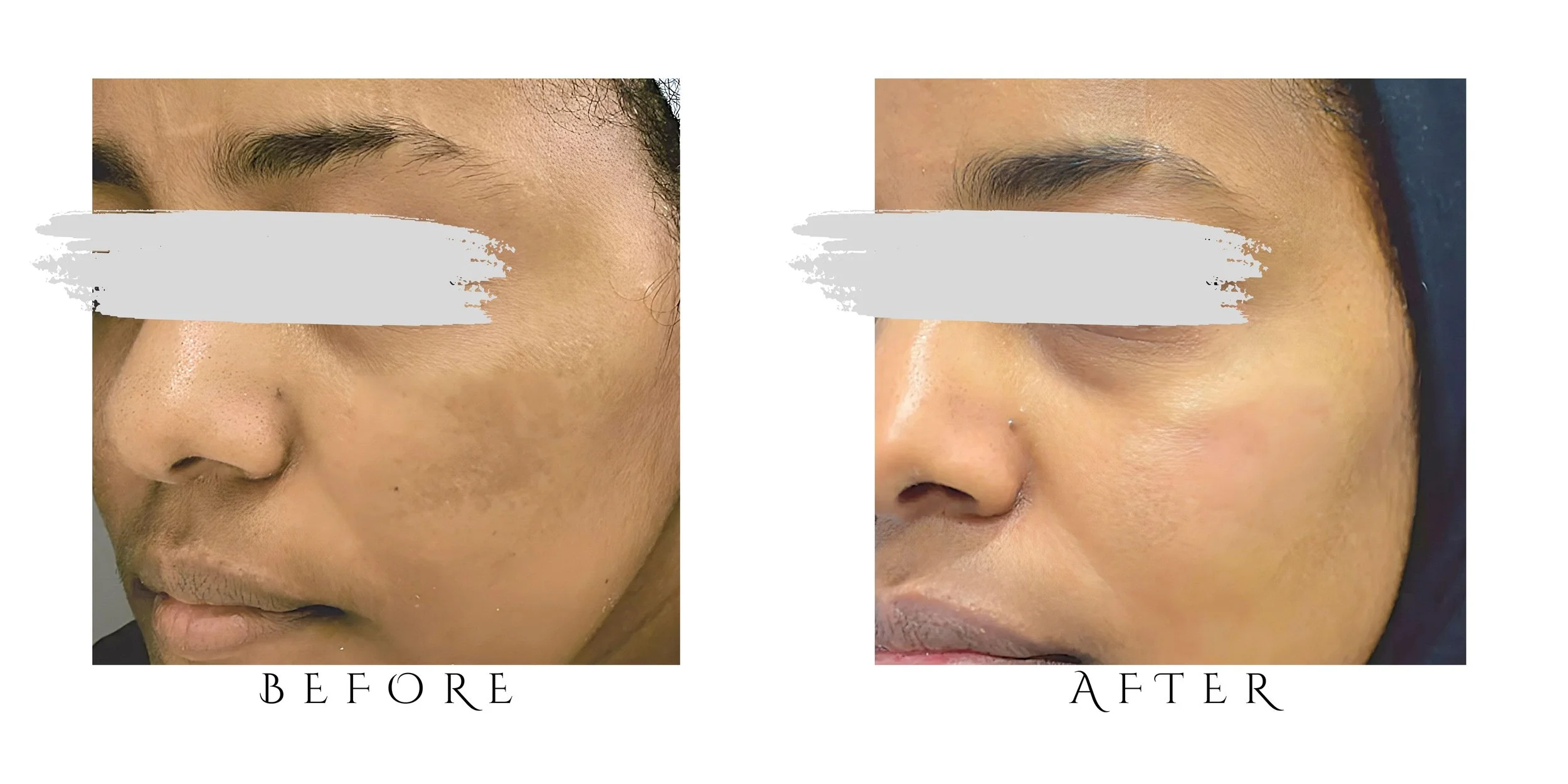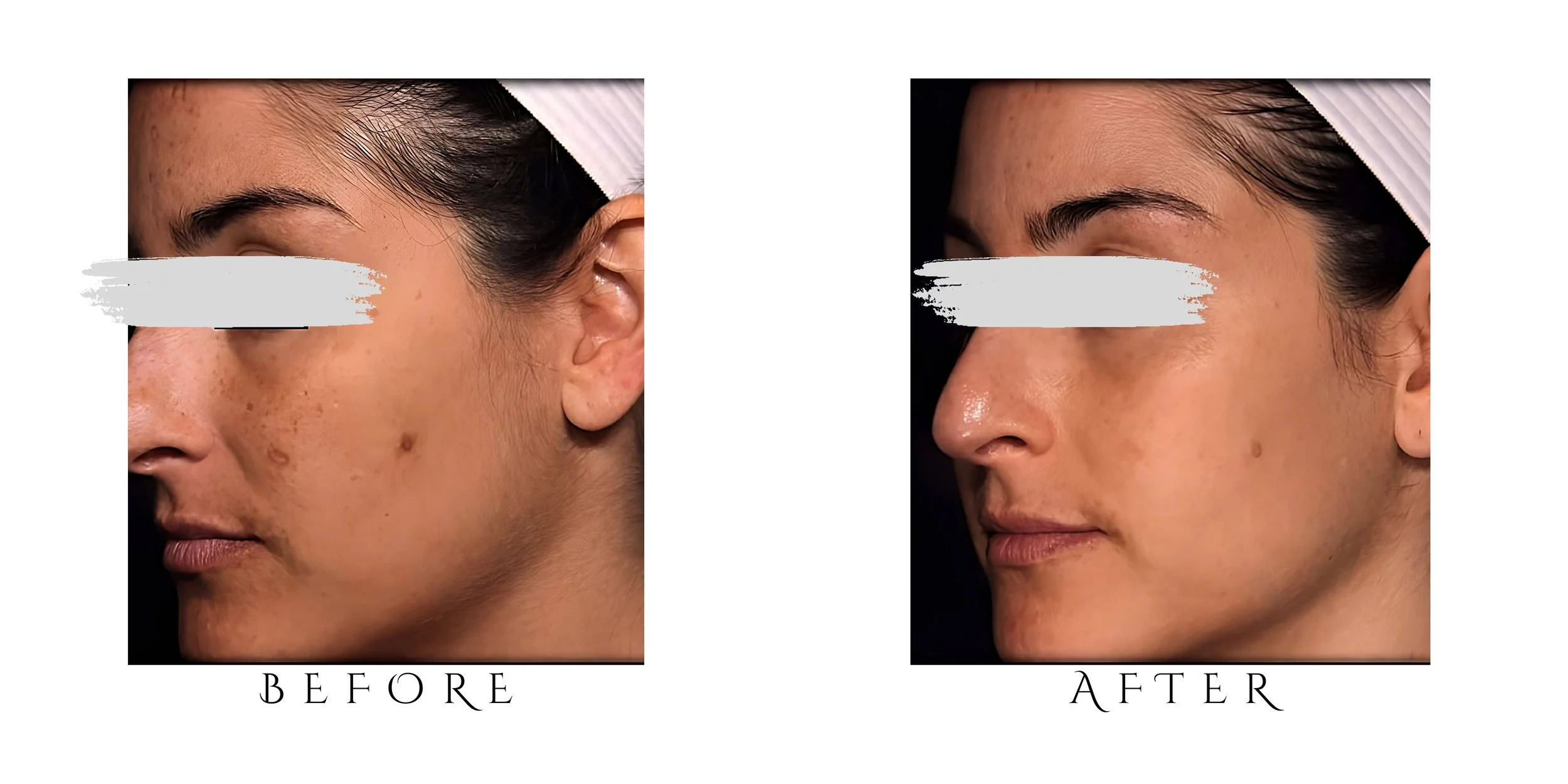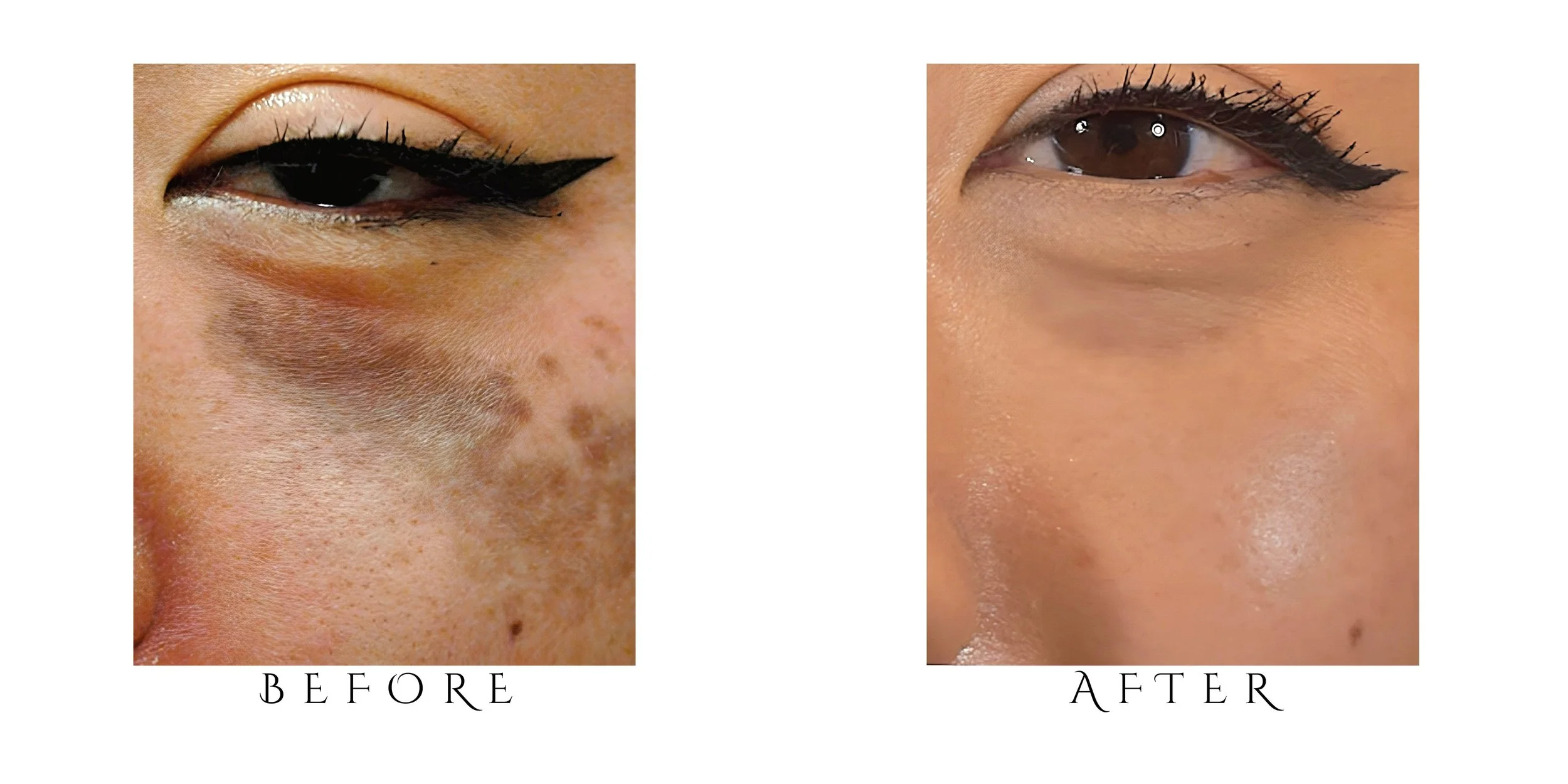Skin Pigmentation Treatment
Hyperpigmentation is a common cause of dark patches on the skin. It occurs when the skin produces excess melanin, the pigment that gives skin its color. It can affect people of all skin types. Hyperpigmentation is very common on the skin of color, as darker skin tones already have a higher melanin content. Burns, bruises, acne, rashes, or other trauma to the skin can cause it to produce more melanin and lead to dark spots.
Types of Hyperpigmentation include:
Age spots also called “liver” spots
Melasma
Prolonged sun exposure, some medications, hormonal changes, and certain health conditions can also lead to hyperpigmentation.
Treatment Options
PICO laser therapy safely and effectively addresses hyperpigmentation and other pigmentation issues. PICO is regarded as one of the most advanced lasers currently available on the market. It delivers noticeable, permanent results in fewer sessions than comparable options, It is safe, requires minimal downtime, and can be used across the entire face and body. PICO's ultra-short pulses of energy – without heat – deliver targeted and dramatic results without scarring or frying skin. The laser's impact on the skin is intense and shattering—the melanin in problem pigment areas is eliminated naturally by the body. PICO's spot size settings allow you to treat very small areas. In this case, larger spots in a group can be treated in less time than with other lasers.
PICO Laser
The Fractional CO2 laser is a type of skin treatment used to reduce the appearance of acne scars, deep wrinkles, warts, and various types of skin hyperpigmentation (e.g. sun spots, aging spots, and melasma). It is a non-invasive procedure that uses a laser, made of carbon dioxide, to remove the outer layers of damaged skin. The procedure activates the production of multiple microthermal zones which stimulates your body’s natural healing process. This ultimately replaces injured cells with new healthy skin.
Fractional CO2
Fotona laser removal of pigmented lesions works by destroying the pigment in the skin without requiring the removal of any tissue. A procedure is completed in three simple steps.
In step one, the laser produces short pulses of intense light that pass harmlessly through the top layers of the skin to be absorbed by melanin pigment in the lesion.
In step two, photoacoustic waves are produced when laser light interacts with melanin pigment, causing the pigment to break up into smaller particles.
In step three, the body's natural immunity system then clears these particles from the skin by removing them through the lymphatic system.
Fotona Laser
The above-mentioned list is not definitive and may differ in the treatment of your specific skin condition. Furthermore, depending on your case, the procedures can be used alone or in combination. Your doctor will select the best treatment strategy according to your individual specifications.
Dr. Lola Ali is a professional skincare therapist with over 20 years of experience helping people achieve younger, brighter, and healthier skin. If you would like to know more about your specific aesthetical skin condition and available treatment approaches, please do not hesitate and book your first free skincare check-up and consultation with her.













